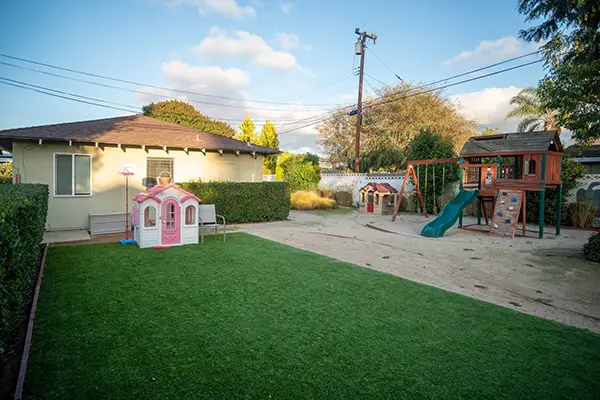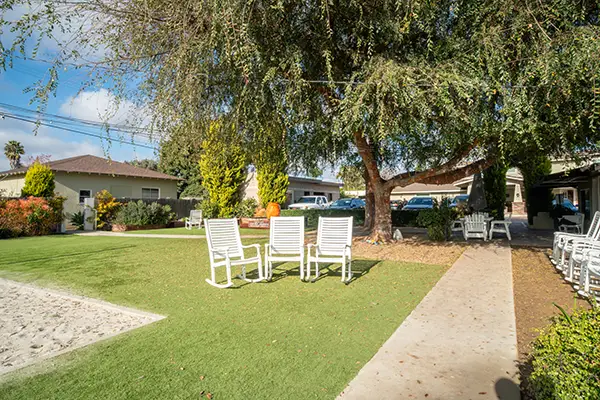
Klonopin is a brand name for clonazepam which, in turn, is in the family of drugs known as benzodiazepines. Women are often prescribed benzodiazepines for:
- Anxiety
- Panic attacks
- Emotional pain
- Grief
- Trauma
- Sleep problems
- Chronic illness
- Menopause
- Stress
More women than men are prescribed benzodiazepines (also known as benzos). Generally, at twice the rate. This can be a sign of a serious social problem. Many women have been prescribed a drug rather than the human support they need to cope. Benzos are among the most commonly prescribed drugs in the country. According to a national survey, almost 30 million people used them in 2015.
Why Do Women Experience Klonopin Abuse?
Women do have too much stress and anxiety in their lives much of the time. Many times they are taking care of children, elderly parents, husbands, and jobs with little to no assistance. Frequently, they have very little time to look after themselves physically or emotionally.
Also, women are more likely than men to be living in poverty as single parents or as seniors. Still, these are social and economic problems that can’t be solved by giving pills to women. The only real solution is with services and community support.
How Klonopin is Prescribed
Benzodiazepines, such as Klonopin, were initially intended for short-term use only — 7 to 10 days at the most. Instead, many women are given prescriptions for much longer times. Some doctors will prescribe benzodiazepines month after month without a follow-up visit.
Some doctors even prescribe more than one type of benzodiazepine at the same time. And some will switch a woman from pill to pill if the old one stops being effective. Yet others will prescribe a second benzodiazepine if the woman has negative side effects from the first.
These days, benzodiazepines are typically prescribed in four ways:
- As a single dose to cope with a specific event such as surgery or a plane ride.
- Short-term use up to four weeks. An example would be a death in the family.
- For a set period exceeding one month. Coping with a stressful divorce would be an example.
- Long-term use. No end date.
Unfortunately, many women slip from short-term use to long-term use. This happens a lot when the doctor fails to do any follow-up and when the woman is not given any community support or counseling.
Possible Side Effects of Klonopin
If you have signs of an allergic reaction such as:
- hives,
- difficulty breathing, or
- swelling of your face, lips, or tongue,
get emergency medical help.
Call your medical provider at once if you have:
- new or worsening seizures,
- severe drowsiness,
- unusual changes in mood or behavior,
- confusion, aggression, hallucinations,
- thoughts of suicide or hurting yourself,
- weak or shallow breathing,
- pounding heartbeats or fluttering in your chest, or
- unusual or involuntary eye movements.
The sedative effects of clonazepam may last longer in older adults. Accidental falls are common in elderly patients who take benzodiazepines. Use caution to avoid falling or accidental injury while you are taking clonazepam.
Common side effects may include:
- feeling tired or depressed;
- drowsiness, dizziness;
- memory problems; or
- problems with balance or coordination.
Is Klonopin Addictive?
Yes, it is. Along with other drugs in this class such as Xanax, Librium, Valium, and Ativan to name a few. Extended use of tranquilizers and sleeping aids can cause physical and mental dependency.
Every woman has the potential to become addicted, regardless of her background, income, education, and age. Some find that they are dependent because:
- Their trusted family doctor prescribed it.
- They buy it on the street to manage pain or deal with withdrawal from illicit drugs.
Either way, they end up feeling confused, isolated, trapped, and ashamed. Women should all weigh the benefits of using benzodiazepines against the dangers of becoming addicted.
What Are Signs of Klonopin Abuse?
The signs of benzodiazepine (Klonopin) abuse include:
- The feeling of being unable to cope without it.
- Trying unsuccessfully to quit or cut down.
- Craving the drug.
- Feeling severe mental or physical discomfort if you miss a pill.
- Going to extremes to make sure your pills are always nearby.
- Constantly checking your supply to make sure you don’t run out.
- Taking extra pills when a situation is difficult for you.
- Taking more pills or trying different brands because the effects are starting to wear off.
- Increasing your dosage over time.
- Noticing the drug’s effects are wearing off.
Additional Dangers of Klonopin Abuse
Use of benzodiazepines is also associated with accidents. Women are urged not to drive while taking it. Furthermore, the risk of falling because of benzodiazepine use is a serious problem for seniors and people with certain medical conditions. For instance, women with low bone density can break a hip easily during a fall.
What Other Drugs Affect Klonopin?
Klonopin may cause drowsiness, so you need to be careful about using other medications that also cause drowsiness including:
- Antihistamines such as Benadryl
- Narcotic pain medication such as morphine, OxyContin, and Vicodin
- Opioid cough medications such as codeine cough syrup
- Sleep medications such as Ambien
- Anti-anxiety, antipsychotic, and antidepressant medications such as amitriptyline
People taking benzos with other sedating medications or alcohol should get immediate medical attention if they start to feel unusual dizziness, slow or difficult breathing, extreme sleepiness, or unresponsiveness.
Other drugs may interact with Klonopin, including other prescription and over-the-counter medicines, vitamins, and herbal products. Be sure to inform your medical provider about all your current medicines and any medicine you start or stop using.
Black Box Warning
It has been found by the FDA that using benzodiazepine drugs, such as Klonopin, with opioid medications or other sedating medications can result in serious negative reactions. This includes slowed or difficulty breathing and death. The FDA issues black box warnings when a drug carries serious safety risks.
The Cover-Up
 Using tranquilizers and sleeping pills in the short-term can be a helpful part of a comprehensive plan to deal with anxiety or sleep difficulties. However, the drugs only treat the symptoms, not the underlying problem. To have real relief, though, the woman needs to get at the cause for her symptoms.
Using tranquilizers and sleeping pills in the short-term can be a helpful part of a comprehensive plan to deal with anxiety or sleep difficulties. However, the drugs only treat the symptoms, not the underlying problem. To have real relief, though, the woman needs to get at the cause for her symptoms.
Benzodiazepines work well when you first start taking them, so it’s easy to become dependent. Many women feel it’s easier to take the pills for “just one more day” instead of taking on the root problems. Given how little social support there is for women in critical situations or emotional distress.
Still, many women reach a point where the negative effects of taking benzos surpass the original benefits. They don’t want to cover up the reasons for their anxiety or sleeplessness any longer. This stage is important and life-changing. However, any change in the use of benzodiazepines must be made slowly and in consultation with medical professionals.
Treatment and the Recovery Process
When a woman makes the commitment to herself to stop using Klonopin, recovery begins. Making that initial decision is the first step to changing your life.
Detox and Withdrawal From Benzos
Remember, do not suddenly stop taking benzodiazepines “cold turkey.” Withdrawal is extremely dangerous and can cause lifelong negative side effects. If you have decided to stop using or even just cut back, try to find supportive health care providers. A medically supervised detox in a detox center is the best chance to complete the withdrawal process successfully. Withdrawal from benzos is so difficult, not to mention dangerous, many people are not able to make it on their own and relapse before detoxing.
The withdrawal process is different for each woman depending on:
- How long she has used the drug
- Personal circumstances
The process can be very difficult if she has used the drug for a long time. Withdrawal needs to go slowly and gradually. Medical supervision is necessary during this period.
Common withdrawal symptoms include:
- Increase in anxiety and panic attacks
- Flu-like symptoms
- Sensitivity to light
- Depression
- Excitability, restlessness
- Memory problems
- Lack of ability to concentrate
- Dizziness and light-headedness
- Tremors or shaking
- Heart palpitations and sweating
- Sweating
- Indigestion and nausea
- Body pains
- Changes in vision, hearing, and other perception
Less common symptoms:
- Loss of sense of identity
- Suicidal thoughts
- Numbness
- Hallucinations
- Aggressive outbursts
- Overly sensitive to sound or touch
- Increased saliva, difficulty swallowing
- Tightness around the head
Medication to Treat Withdrawal
There are no medications available to treat Klonopin withdrawal. But still, withdrawing from benzodiazepines needs to be accomplished with medical supervision, in a place where your symptoms such as dehydration from sweating and nausea may be addressed to keep you comfortable. And so that you will receive immediate help if necessary.
Therapy
During treatment for benzodiazepine addiction, psychotherapy (talk therapy) is essential to discover underlying causes for taking Klonopin in the first place. Behavioral therapies focus on changing a person’s behaviors concerning substance use. This is done by teaching life skills that help the individual better cope with situations that may lead to risky use and relapse.
Group and Individual Therapy
Individual therapy is a confidential process between the individual struggling with addiction and the therapist. People may find individual therapy useful for help with issues that are hard to face alone. It helps people overcome obstacles to their well-being and increase positive feelings.
Group therapy can act as a support network and a sounding board that can help you come up with ideas for improving a difficult situation. Joining a group of strangers might seem intimidating at first, but members are usually surprised by how rewarding a group experience can be.
Although group members are a source of support, formal group therapy is over and above informal support and self-help groups. Group therapy sessions are led by one or more psychologists with specialized training who teach proven strategies for handling specific problems.
Behavioral Therapies
Cognitive Behavioral Therapy (CBT) was originally meant for the treatment of depression and has been found to be effective in treating many types of substance use disorders (SUDs). CBT teaches people to recognize problem behaviors and triggers for substance misuse and to help develop coping techniques.
Contingency Management (CM) encourages behavior changes by providing tangible rewards for positive behavior. Examples would be clean drug tests and attending meetings. Individuals in CM could receive rewards in the form of vouchers for healthy restaurant meals or gym memberships.
Dialectical Behavior Therapy (DBT) is another type of cognitive-behavioral therapy that aims to teach people to live in the moment, learn healthy ways to handle stress and regulate their emotions.
Family Therapy
Family therapy focuses on using the strength and assets of the family to deal with SUD and reduce the effect of the addiction on the individual and the family members. When a family member has a substance use disorder, all members are affected. Family therapy helps to improve communication, resolve conflicts, and return the family to a normal balance.
Dual Diagnosis
As mentioned, benzos only treat symptoms, not underlying causes. Therapy helps to uncover a co-existing mental disorder, a common cause for drug use. This is known as a dual diagnosis. And it is important to treat both conditions at the same time, otherwise, each one reinforces the other. Experienced medical experts are necessary to treat this diagnosis.
Where Can You Find Professionals Who Care?
If you or a loved one are dealing with an addiction to Klonopin or any other benzodiazepine, you know you need medical professionals who are experienced in this type of addiction. Effects of Klonopin addiction and withdrawal symptoms can be life-threatening and require the highest level of care. You can find this type of treatment at New Directions for Women.
Our licensed and certified staff are experienced in helping women. That is all we do. At New Directions, we understand how you feel and want to work with you. You will receive a treatment program designed just for you and your needs.
New Directions is certified by the American Society of Addiction Medicine (ASAM) and internationally accredited with the Commission on Accreditation of Rehabilitation Facilities (CARF). Contact us now. This is too important to wait.



